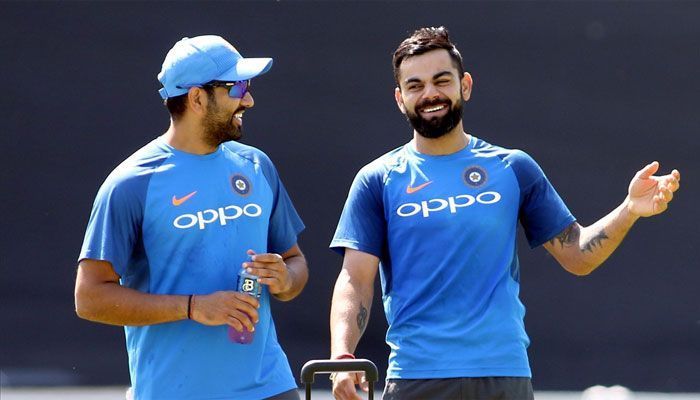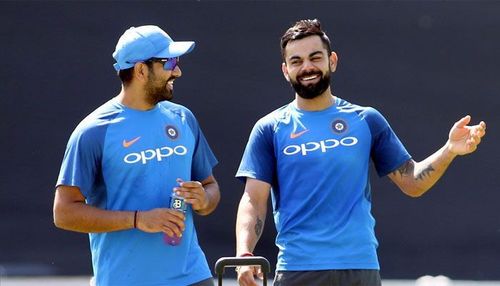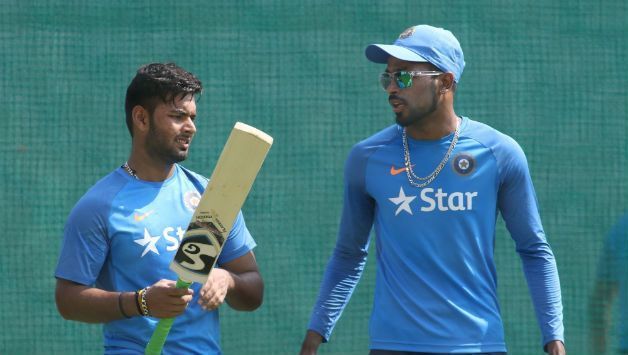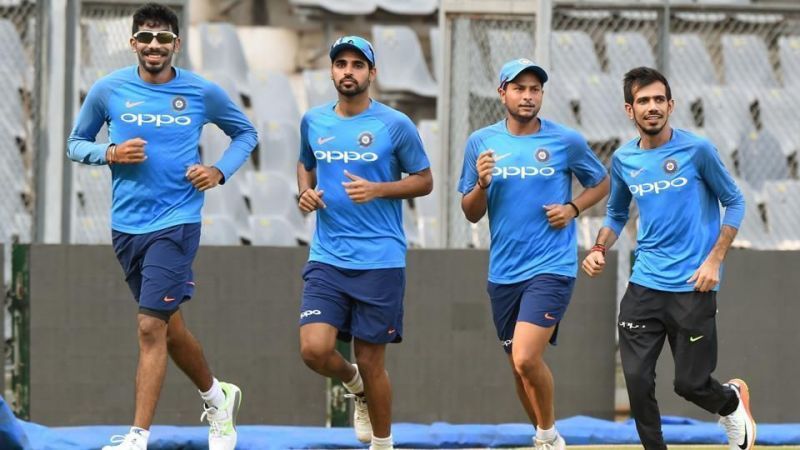
India needs to revamp T20I approach in pursuit of all-format dominance

It has been a shade over 12 years since India won the inaugural ICC T20 World Cup in South Africa. That feat was remarkable in itself- in the aftermath of a dismal ODI World Cup campaign, a bunch of youngsters led by MS Dhoni overcame all odds to prevail over far more fancied oppositions. It also laid the foundation for the Indian Premier League's genesis in 2008 which revolutionised the game and till date, remains the pinnacle of T20I cricket.
Intriguingly though, India have failed to add to their 2007 triumph and have perennially lagged amidst the ever-changing landscape of the game's shortest format. Having consistently asserted their superiority in both Tests and ODIs over the past few years, it is about time India sorted out their T20I woes as they seek to scale the summit across formats.
For far too long, India has perceived T20I cricket as a shorter version of ODIs and subsequently picked squads as an extension of the ODI team. Often, some main players are rested while the fringe ODI players get their opportunity in T20Is to push their case for ODI selection.
This results in a solid and conservative approach which has been a proven success for the Indian team in ODIs but has increasingly become their biggest shortcoming in T20I cricket.
The issues begin at the top of the order. Rohit Sharma and Shikhar Dhawan are a prolific opening pair in ODI cricket and follow a set template in their partnership. They start steadily, prevent damage and build a platform before taking off. However, this approach is a proven failure in modern T20I cricket where there is a growing need to maximise the powerplay overs and at least one of the two openers must take the aggressive route early on.
Given Rohit's stature as a T20 match-winner and his ability to consistently make up for slow starts, he is indispensable but the same can't be said about Dhawan. His T20I record doesn't turn heads and his strike-rate across all T20 cricket including the IPL, stands underwhelmingly at 124.
India also need to weigh in the fact that while Virat Kohli is an outstanding T20 batsman, power-hitting is not his forte and essentially this means the team's first-choice top three comprises of batsmen who will rarely ever create a match-defining impact in the first eight overs of an innings. The only solution is to replace Dhawan with a batsman who can generate a high strike-rate to help Rohit and Kohli ease into their innings.
There are plenty of options on offer: one look at KL Rahul's T20I career would baffle most people as to how he isn't a certainty in the starting XI. Rahul averages above 41 in 26 innings, striking at 146.67. Other alternatives include Shubman Gill, Shreyas Iyer or even Rishabh Pant. Pant was a genuine opener in U-19 cricket and excelled in the same role in his debut IPL season as well.
India need someone who can potentially win a match through his batting in the powerplay itself and in a top three which already features the dependability of the captain and his deputy, it makes a lot of sense to inject a fearless youngster into the mix.
The conservative approach at the top has traditionally seeped into the middle-order as well, with unnecessary focus placed on keeping wickets in hand instead of maximising batting resources. For long, India hasn't been brave enough to load their side with big-hitters and have instead opted for the touch players who provide more consistent returns.
While such batsmen tend to add solidity on tricky surfaces, their presence leads to the team falling 15-20 runs short of a winning total on flatter pitches. One need not look at the statistics to know which type of surface is more prevalent in T20 cricket today, particularly in knockout games where India have faltered in the last two T20 World Cups.

Currently, only Hardik Pandya can claim to have a guaranteed spot in the middle order. With the selectors having seemingly moved on from MS Dhoni, Pant also seems to have a secured place but he needs to be backed by the team management, not necessarily as a wicket-keeper but as a genuine batsman for his remarkable hitting ability.
Talking about hitting, India have inexplicably underutilised Hardik's ability in T20I cricket. He has batted 25 times in 40 matches and faced only 210 balls. Given his rising stature in the format evidenced by his exploits in IPL 2019, India must find a way to give him more of an opportunity to make an impact.
While Shreyas Iyer, Manish Pandey and Sanju Samson continue to battle it out for the No.4 spot, it is hard to ignore the fact that their value to a T20 team is significantly diminished when they bat outside the top-3. This is one of the toughest challenges to resolve since most batsmen earn their place based on their performances in IPL and domestic cricket where they inevitably bat at the top of the order; the only way out for them is to adapt and the team management to adopt a flexible, situational approach towards the batting order.
India do have some more options to consider from outside the current squad: Dinesh Karthik has done little wrong in T20I cricket since his Nidahas Trophy heroics and continues to impress as a reliable finisher for both KKR and Tamil Nadu. He remains a tempting choice for multiple roles in the middle-order given his experience and is a safe wicket-keeper too. Another left-field choice would be Nitish Rana. He was fourth among the Indians in the maximum six-hitters list at IPL 2019 after Hardik, Pant and Rahul and has been in terrific form this season. His abilities as a part-time off-spinner is also a useful add-on.
Among the all-rounders, Krunal Pandya has deservedly been rewarded with an extended run in the side, though Ravindra Jadeja is likely to continue challenging him for his place. While little separates the two in terms of their bowling, it is the calmness Krunal brings to the crease as a batsman and his proven performances under-pressure in the IPL which serves as a tie-breaker.

In India's quest to strengthen the lower-order batting, the team has dared to break the wrist-spinning duo of Yuzvendra Chahal and Kuldeep Yadav to accommodate Washington Sundar. The move is in sync with the idea to explore different combinations but in the long run, it makes little sense to tinker with a crucial facet of India's bowling attack, particularly considering the prospect of varied oppositions at the upcoming T20 World Cup.
The rest of the bowling attack seems pretty much sorted, with a back-up pool consisting of the likes of Deepak Chahar and Khaleel Ahmed being formed in the absence of Bhuvneshwar Kumar and Jasprit Bumrah. There is a sense of clarity in the roles of each of the bowlers and in unison, they form a relentless mix of variety.
India's ideal T20I XI:
- Rohit Sharma
- Aggressive Opener (KL Rahul/ Shubman Gill/ Shreyas Iyer/ Rishabh Pant)
- Virat Kohli [c]
- Batsman (Iyer/ Manish Pandey/ Sanju Samson/ Nitish Rana)
- Wicket-keeper (Pant/ Dinesh Karthik)
- Hardik Pandya
- All-rounder (Krunal Pandya/ Ravindra Jadeja/Washington Sundar)
- Bhuvneshwar Kumar
- Kuldeep Yadav
- Yuzvendra Chahal
- Jasprit Bumrah
India's pursuit simofultaneously dominating all formats of the game has been at the forefront of captain Virat Kohli's vision for a while now and was reinforced by vice-captain Rohit's statement at a recent press conference.
"We have not had a great run and we are ranked five and we want to get that number higher. We want to be at the top. That's the standard we have set and there's no reason we can't get that"
Not often does a team find itself with arguably the best all-round T20I bowling attack in the world. India better make the most of it by shedding the conservatism their limited-overs cricket is characterised by and embracing fearlessness.
The irony of being at home for the IPL- the toughest T20 competition in the world, has already haunted India for years as they are yet to lift the world title since its inception. Will India be proactive and succeed in transforming their outdated methods? For it is only a matter of time before the irony translates into a subject of ridicule.
Follow Sportskeeda for all the updates on IND vs BAN schedule, IND vs BAN head to head, news, results, points table, most runs, most wickets and fantasy tips.